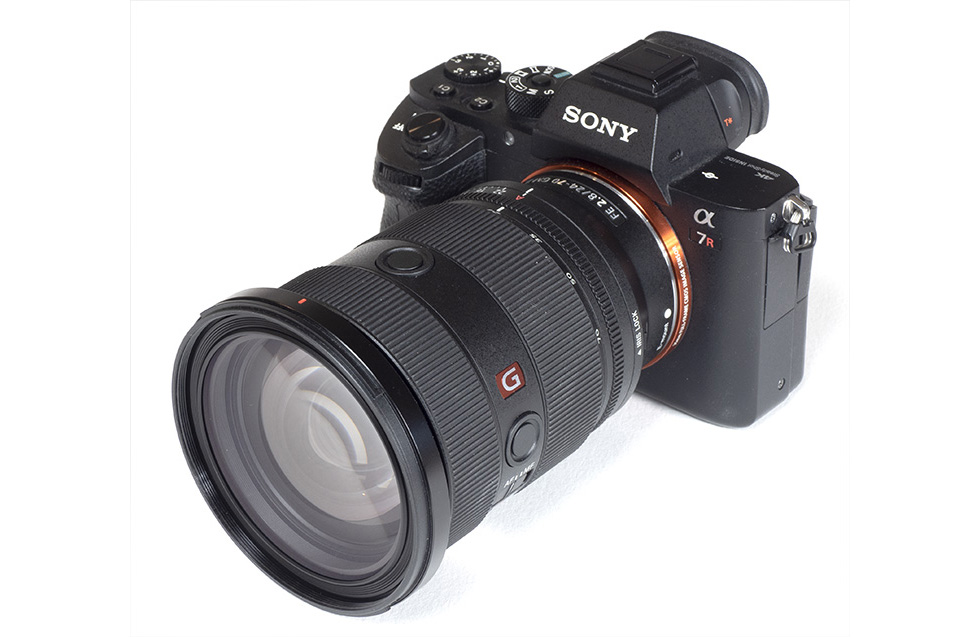Review by Klaus Schroiff, published June 2022
Introduction
While Sony has been the undisputed leader in terms of the number of professional-grade mirrorless system lenses for many years, they are at least facing competition regarding the quality of individual lenses. Some of their 1st generation pro glass has been getting a bit long in the tooth. And one of these lenses was the Sony FE 24-70mm f/2.8 GM – not a bad lens by any standard but it has its weak spots. And thus Sony reacted with the new Sony FE 24-70mm f/2.8 GM II. As you may notice, the name specs didn’t change but there are some substantial changes under the hood compared to its predecessor. The aspect that didn’t change much is, of course, the pricing at around $2300/2400EUR but then nobody expects a GM (“Grand Master”) lens to be truly affordable.
The most obvious difference is the size and weight of the Sony FE 24-70mm f/2.8 GM II. Compared to the mark I as well as most non-E-mount competitors, it is a very small and lightweight lens. Coming in at just 695g, it is 20% lighter. In fact, this is comparable to the Sony FE 24-105mm f/4 G OSS which is one stop slower. The weight reduction didn’t have any negative impacts on the build quality. While Sony may have replaced some metal parts with compound materials (aka plastics), the body feels very sturdy and there’s no wobbling even when extending the lens to its 70mm setting. The lens hosts a number of small goodies like focus stop buttons, a dedicated aperture ring with a clickless option (“Iris lock/unlock”) and a switch for controlling the stiffness of the zoom mechanism. Being a professional-grade lens, it is, of course, sealed against dust and moisture. A fluorine coating on the front element also helps in this respect. A petal-shaped hood with a filter window is also part of the package.

The lens features no less than 4 XD linear motors (Extreme Dynamic) for focusing. The result is a blazingly fast and noiseless AF. Smooth manual focusing works “by-wire” thus you are driving the AF motors when turning the focus ring.
Some may regret that the lens doesn’t offer a dedicated image stabilizer but this isn’t necessarily a bad thing. Lenses with IS tend to have a worse centering quality and fast standard zoom lenses are complex beings to start with. Namely, the Sony FE 24-70mm f/2.8 GM II has no less than 20 elements so it’s probably a good idea to be a little conservative here.
Below is a comparison between the Sony FE 24-70mm f/2.8 II (left) and its predecessor.
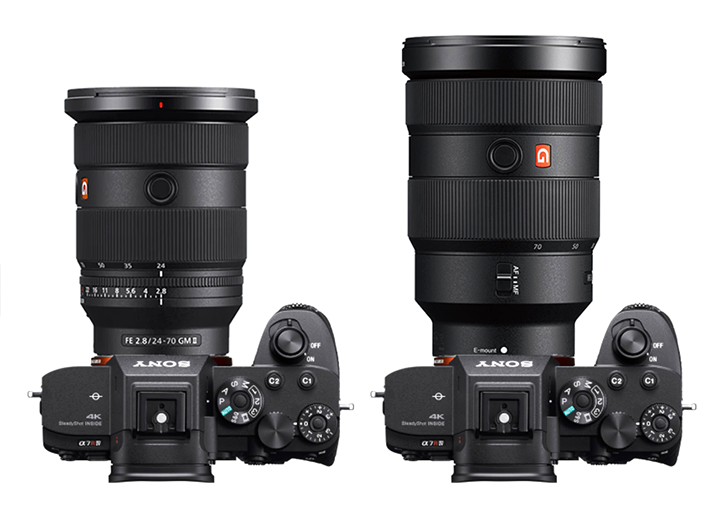
| Specifications | |
|---|---|
| Optical construction | 22 elements in 16 groups, with 5x aspherical, 2x ED, 2x Super ED, 2xXA elements |
| Number of aperture blades | 11 (rounded) |
| min. focus distance | 0.21m(W)-0.3m(T) (max magnification 1:3) |
| Dimensions | 87.8×119.9mm |
| Weight | 695g |
| Filter size | φ82mm |
| Hood | petal-shaped, bayonet mount, supplied |
| Other features | focus stop buttons, Nano AR II coating, clickless mode, zoom smoothness switch, dust- and moisture-resistant, fluorine coating |
Distortion
The Sony FE 24-70mm f/2.8 GM II follows a fairly conventional distortion pattern for a fast standard zoom lens. At 24mm, there’s a medium degree of barrel distortion (~2.5%). This turns into a negligible distortion around the 30mm mark before increasing to slight pincushion distortions at longer focal lengths with a peak of 1.6% at 70mm.

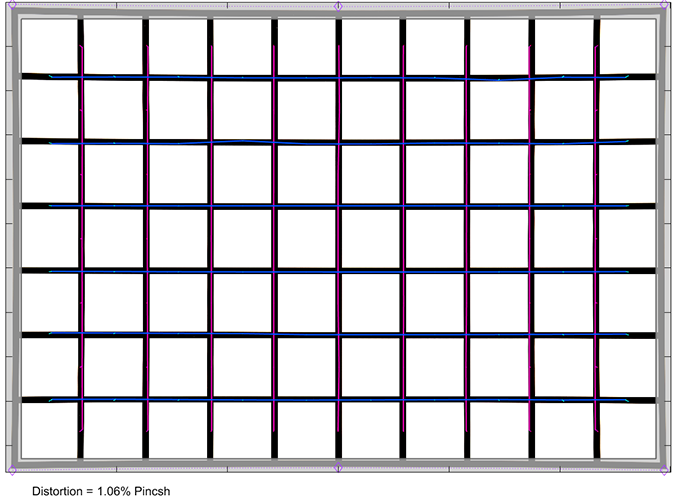
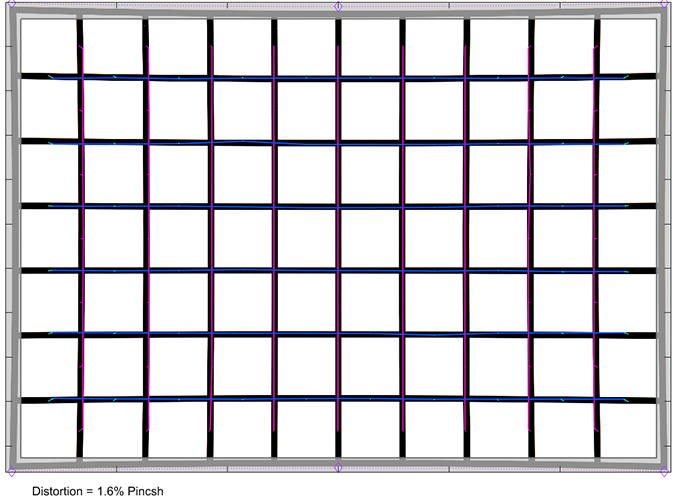
With activated image auto-correction, the distortions are almost perfectly corrected as you can see below.
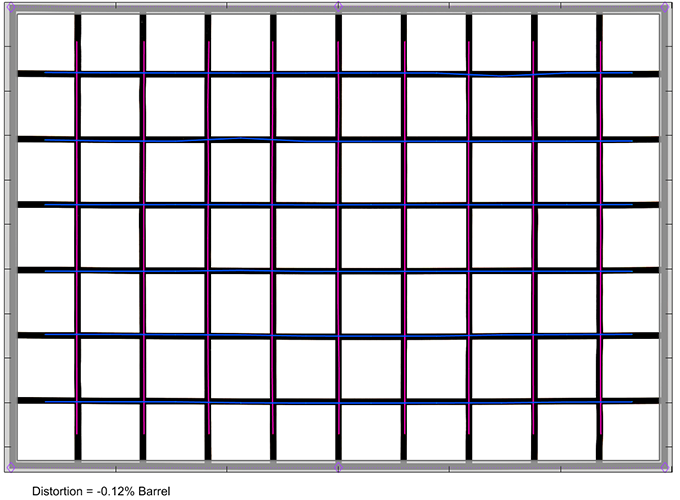
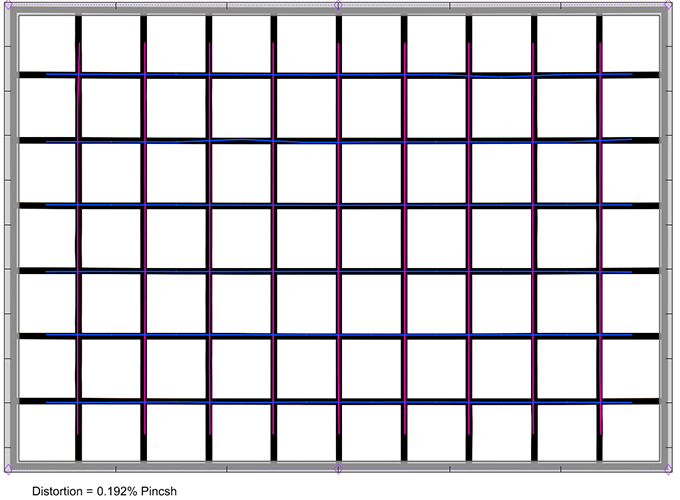

Vignetting
The RAW vignetting is slightly better than average for a lens in this class. Needless to say but this still translates to a very heavy (2.4EV) light falloff at 24mm @ f/2.8. Stopping down helps but a moderate degree of vignetting remains even at f/8. The vignetting is somewhat lower at 40mm and 70mm at a fully open aperture and it’s not a big issue anymore from f/5.6 onward.
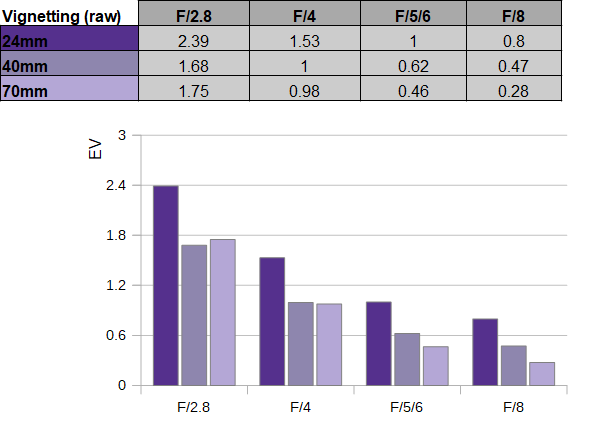
With activated image auto-correction this is reduced to just below 1EV (f-stop) at 24mm & maximum aperture. This can still be noticeable in certain scenes but it’s acceptable. There’s only slight vignetting at other settings.

MTF (resolution)
The resolution characteristic of the Sony FE 24-70mm f/2.8 GM II has been substantially improved over its older cousin. At 24mm and 40mm, the lens is on prime lens level with an outstanding center quality and a very good outer image field. The broader center is superb at 70mm whereas there’s a slight decline in the borders and corners. However, even so, the borders are good to very good at f/2.8 followed by good corners. Stopping down lifts the quality slightly with a peak at f/5.6. The borders are very good here and the corner quality is slightly elevated as well. Diffraction limits the center quality from f/8 onward but it remains very usable at f/11.
The field curvature is low. The centering quality of the tested sample was very good overall.
Please note that the MTF results are not directly comparable across the different systems!
Below is a simplified summary of the formal findings. The chart shows line widths per picture height (LW/PH) which can be taken as a measure of sharpness. If you want to know more about the MTF50 figures you may check out the corresponding Imatest Explanations.

Chromatic Aberrations (CAs)
Lateral CAs (color shadows at the image borders) are slightly elevated at 24mm with an average pixel width of ~1.5px at 24mm. The issue is negligible in the mid to long-range.
These CAs can be auto-corrected without a relevant loss in image quality so this is a lesser issue in real life.

Bokeh
If you invest in a fast standard zoom lens, you also invest in some (moderate) shallow depth-of-field capabilities so let’s see what the Sony lens can do for us.
Out-of-focus highlights are quite nicely rendered. There’s a slight outlining effect and a marginal nervousness in the inner zone. The (center-) highlight discs remain perfectly circular at f/4 and f/5.6 – surely thanks to the 11 rounded aperture blades that Sony has incorporated.

The following samples illustrate the highlight rendering across the image field (taken around 70mm here). Circular highlights are maintained in a very broad zone before deteriorating in the far image corners where mechanical vignetting is taking its toll. Stopping down to f/4 results in an almost perfect rending across the whole image frame already.
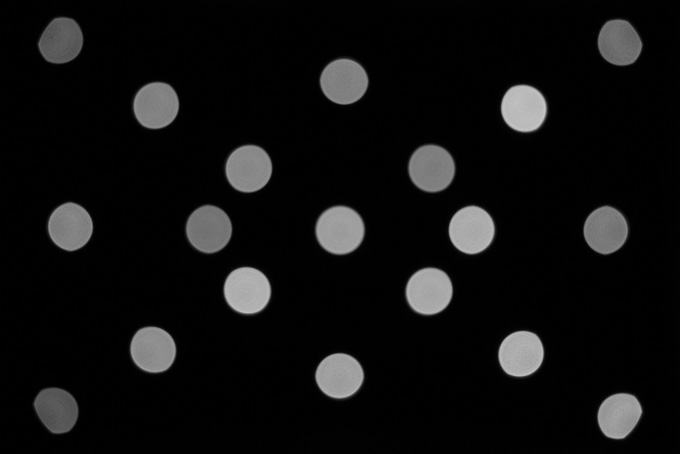


The general rendition in the focus transition zones is almost perfect which is quite an achievement for such a complex standard zoom lens. The edge transitions are very smooth here.

Bokeh Fringing (LoCA)
The correction of axial CAs (LoCA) requires an apochromatic design and the Sony lens is not – like all other fast standard zoom lenses tested to date. In very shallow depth of field scenes, you may spot slightly color-tinted out-of-focus halos just beyond and in front of the focus zone. The effect is reduced at f/4 and gone by f/5.6.

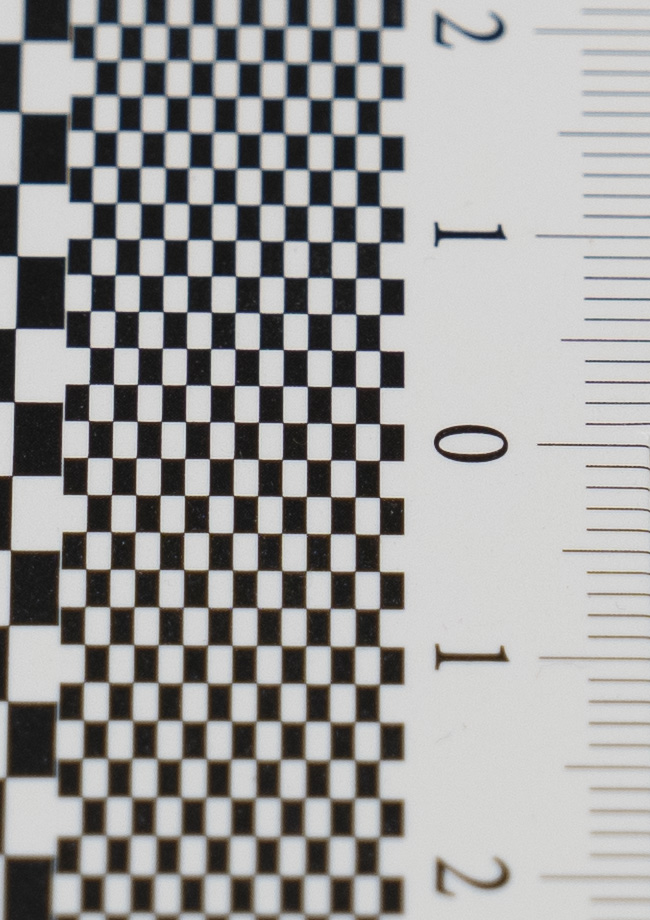
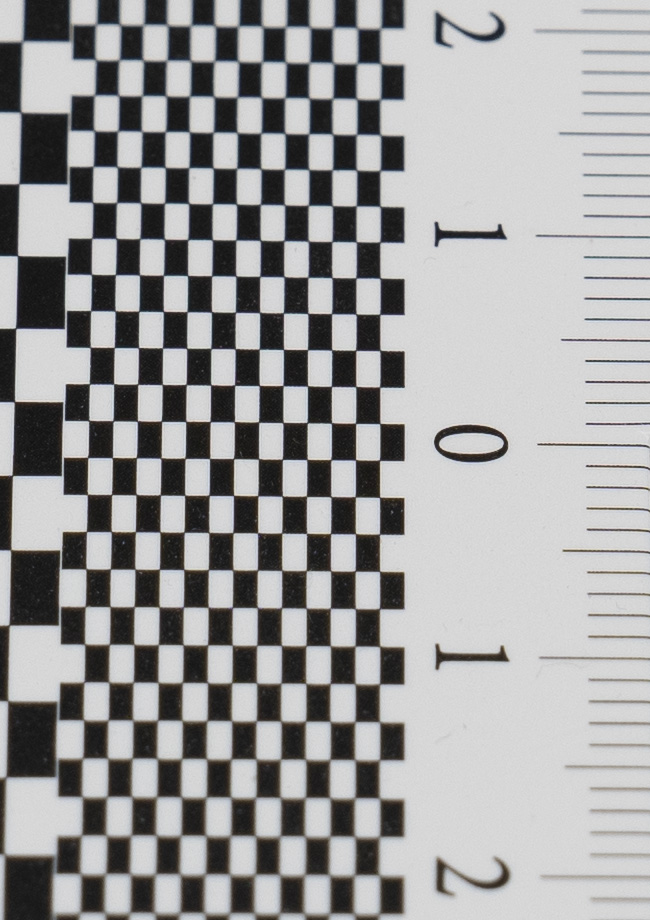
Sun Stars
The Sony FE 24-70mm f/2.8 GM II can produce nice sunstars in the right conditions (stopped down to f/8+) as you can see below.
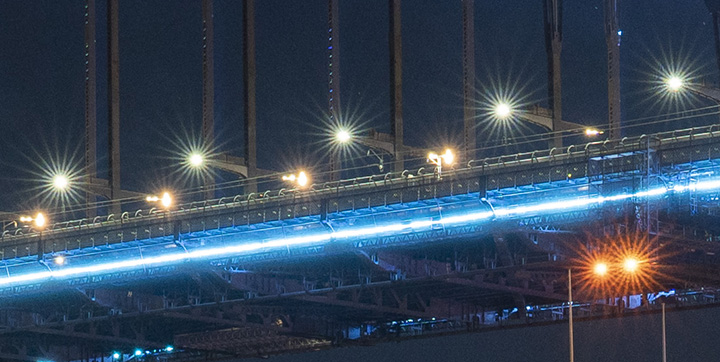
Flare
If we had to name a weakness of the Sony lens, it’s flare. Keep in mind that you can push ALL lenses into producing freak effects. However, as you can see below, the Sony lens can produce some rather unpleasant ghostings and halos in extreme light situations. You won’t take such a shot anyway but the issue can show up at times in less challenging conditions. On the positive side, there’s comparatively little veiling glare.

Sample Images
Competition
Fast standard zoom lenses are plentiful in Sony E-mount. The primary competitor of the Sony FE 24-70mm f/2.8 GM II is probably the Sigma 24-70mm f/2.8 DG DN ART (2nd to the left below). While a good lens at medium aperture settings, it can’t really compete with the optical quality delivered by the Sony lens. But then it’s also just a fraction of the price. A newcomer in this market segment is Samyang’s AF 24-70mm f/2.8 FE. We haven’t tested this one yet. It’s very affordable but also very big and heavy (more than 1Kg) in comparison. Then there’s the new Tamron 28-75mm f/2.8 Di III VXD G2 (to the right below) which is also still on our to-do list. If the predecessor is guidance, it’s a capable lens … but … it only offers 28mm instead of 24mm which will be a showstopper for some users at least. Still, it’s way more affordable and also slightly more lightweight.

Image courtesy of camerasize.com
The Sony FE 24-70mm f/2.8 GM II is a positive surprise in this lens class. To be honest - yours truly has never been a fan of "fast" standard zoom lenses. The truth is that they aren't fast by the prime lens standards in this range at all, the zoom range is rather limited and on top of that, the whole package had the size and weight of a brick. Plus the insane price tag. And several members of the species aren't even overly stellar in terms of optical performance. At least some of these counterarguments no longer apply to the new Sony lens. At less than 700g, it is in the same weight class as your average 24-105mm f/4. And the cream on the cappuccino is a great sharpness at most settings. The results are just great at 24mm and 40mm and still quite impressive at 70mm. The vignetting, distortion and CA figures are about typical for a lens in this class and usually nothing to worry about thanks to auto-correction anyway. The quality of the bokeh is pretty good for a standard zoom lens - especially when compared to its predecessor. In critical scenes, you may spot some LoCAs but it isn't overly pronounced at least. The weakest aspect of the Sony lens is flare which can get freaky in difficult scenes thus it's also a good idea to leave the lens hood attached during shooting.
While you might think that the build quality suffered due to the weight savings, we can't confirm this really. Despite using more plastics, the Sony FE 24-70mm f/2.8 GM II still feels like a professional-grade tool. It's far from the plasticky feel of your average Tamron lens for instance. Sony applied its usual set of additional GM-class goodness. The lens is sealed against dust and moisture - and the fluorine-coated front element should help in this respect as well. There are also two focus stop buttons and a dedicated aperture ring. The latter can also be set into clickless mode for movies. Additionally, you can control the friction of the zoom mechanism. The high friction mode should also prevent zoom creeping. Sony has been using XD linear motors for focusing for a while now but this time they incorporated no less than 4 of them. Despite the amount of glass to be shifted around, the AF speed is exceedingly fast and, of course, silent. In-lens image stabilization is not provided but then most modern Sony cameras can do this for you anyway.
Overall, the Sony FE 24-70mm f/2.8 GM II is an impressive piece of equipment and at least for the time being, it's back at the top of the food chain. Highly recommended!
-
Optical Quality
-
Build Quality
-
Price / Performance


